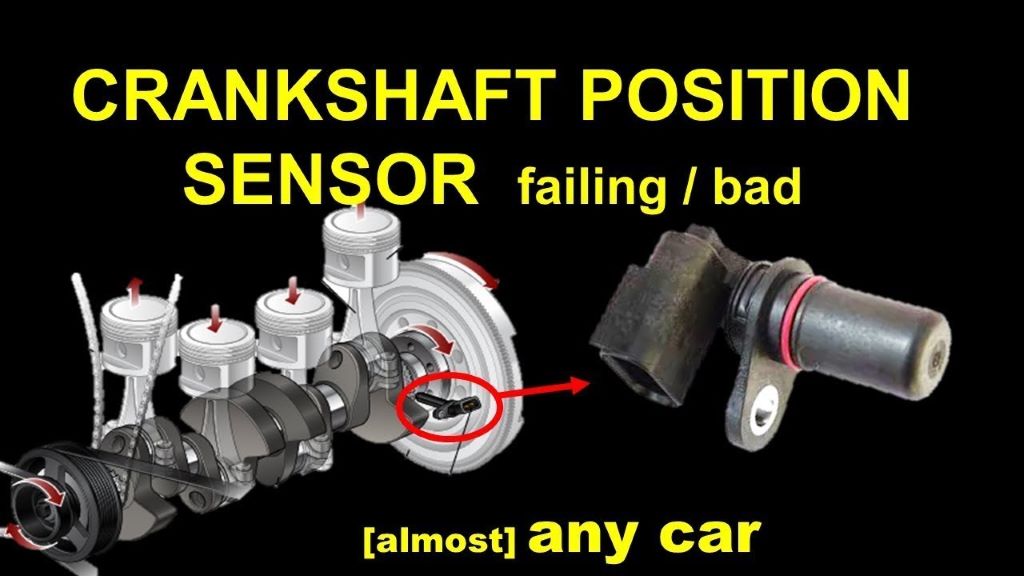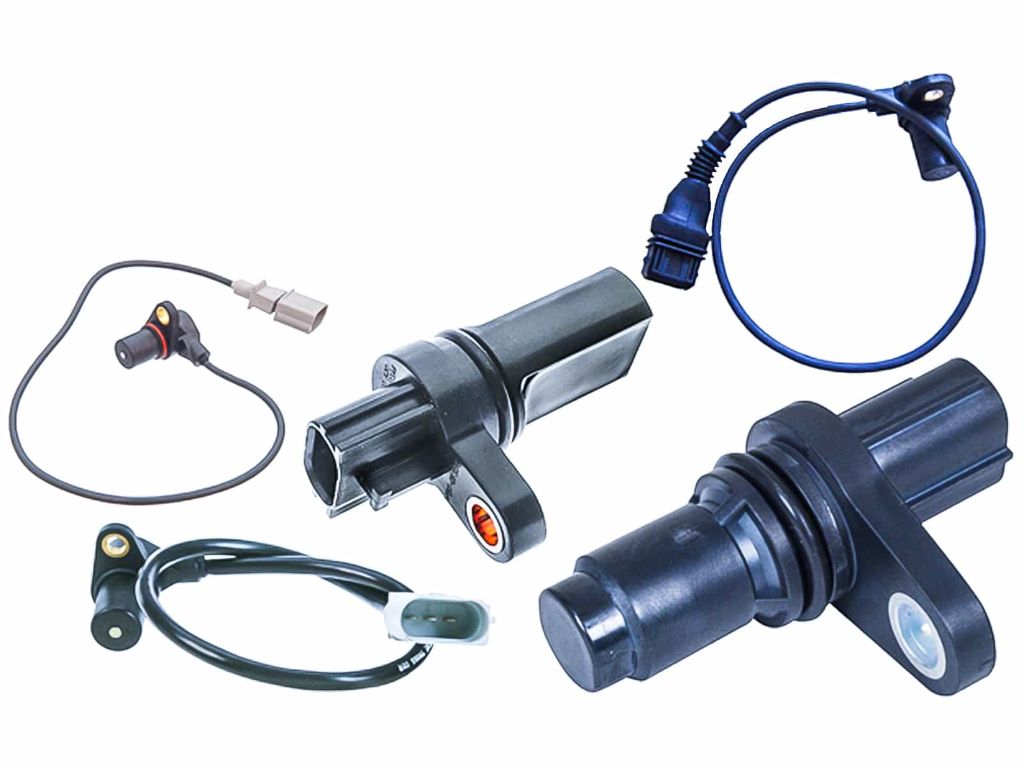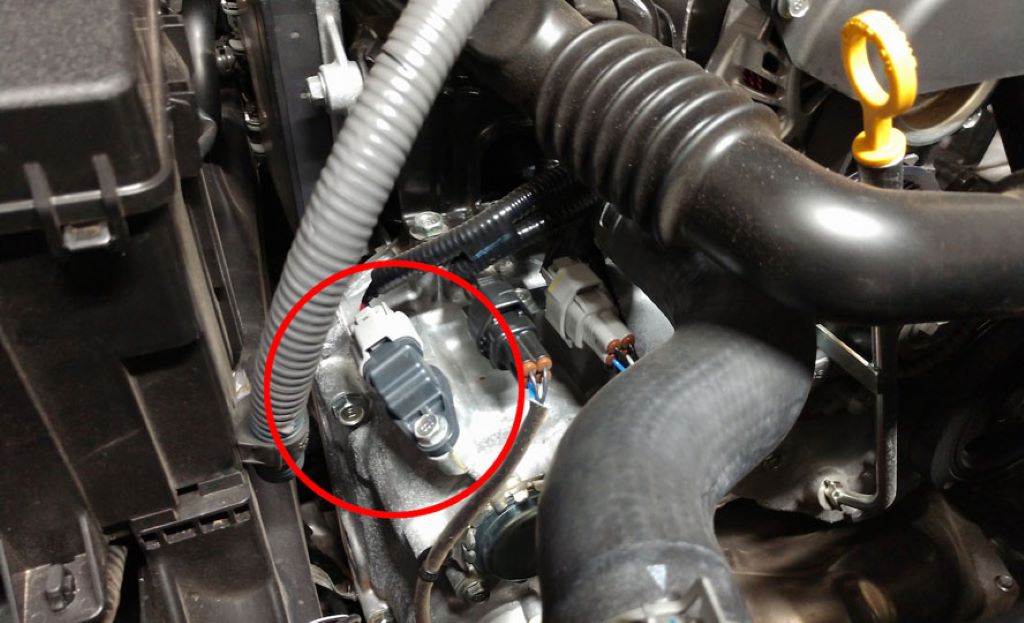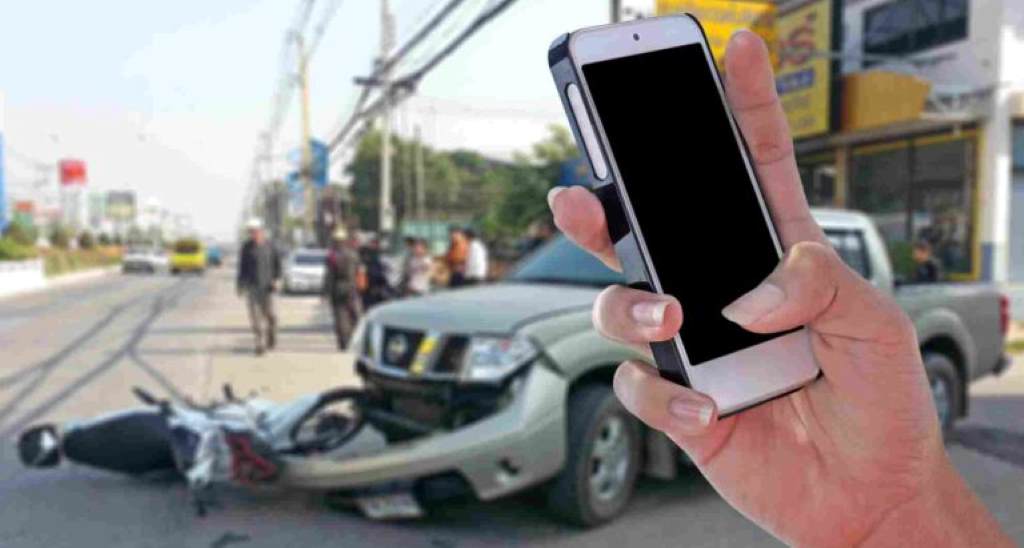Have you ever wondered what makes your car’s engine run smoothly? It’s not just about the fuel and the spark plugs; there’s a little piece of technology hidden under the hood that plays a crucial role in keeping your engine in check. That piece of tech is called the crankshaft sensor, and today, we’re going to dive deep into what it does and why it’s so important. So, buckle up (pun intended), because we’re about to take you on a journey through the fascinating world of crankshaft sensors. We’ll break down the nitty-gritty details, explore how they work, and discover why they are an unsung hero in your vehicle’s performance.
The Unsung Hero of Your Engine
Let’s start with the basics. The crankshaft sensor, often referred to as the crank sensor, is a tiny but mighty device nestled somewhere in the engine bay of your car. You might not notice it, but it’s working tirelessly to ensure your engine runs smoothly, efficiently, and without hiccups.
In simple terms, the crankshaft sensor’s job is to monitor the position and speed of the crankshaft in your engine. But wait, what’s a crankshaft, you ask? Well, think of it as the heart of your engine, pumping life into your vehicle. The crankshaft is responsible for converting the up-and-down motion of the pistons into rotational motion, which ultimately drives your car’s wheels. So, understanding the crankshaft sensor’s role in all of this is key to appreciating its importance.
How Does a Crankshaft Sensor Work?
To appreciate the importance of the crankshaft sensor, it’s crucial to understand how it works. Imagine you’re riding a bicycle. As you pedal, your legs move up and down, just like the pistons in your car’s engine. But it’s the circular motion of the bicycle wheel that propels you forward, much like the crankshaft’s rotational motion in your engine.
Now, imagine you have a sensor on your bicycle that can detect the position and speed of the pedals as they move up and down. This sensor would provide vital information about how fast you’re pedaling and when to shift gears, making your ride smoother and more efficient. Well, that’s essentially what a crankshaft sensor does for your car’s engine.
Here’s a breakdown of how it works:
- Magnetic Magic: Most crankshaft sensors use magnets or magnetic fields to do their job. They’re typically mounted near the crankshaft or the crank pulley. As the crankshaft spins, it passes by the sensor, which senses the changes in the magnetic field.
- Generating Signals: When the crankshaft rotates, it causes the magnetic field around the sensor to fluctuate. This fluctuation generates electrical signals in the sensor.
- Signal Processing: The sensor then sends these signals to the engine control unit (ECU), which is like the brain of your car. The ECU processes this information in real-time to determine the crankshaft’s position and speed.
- Optimizing Performance: With this data in hand, the ECU can make precise adjustments to various engine parameters, such as fuel injection timing and spark timing. It ensures that the engine operates at peak efficiency, reduces emissions, and delivers the power you need.
So, in a nutshell, the crankshaft sensor is like the watchful eye of your engine, constantly providing feedback to the ECU, which, in turn, fine-tunes the engine’s performance to keep it running smoothly. It’s like having a personal trainer for your car’s heart and soul.
Why is the Crankshaft Sensor So Important?
Now that you have a grasp of what a crankshaft sensor does and how it does it, let’s dive deeper into why it’s such a crucial component in your vehicle. Here are some of the key reasons:
1. Precise Timing
Picture this: You’re dancing to your favorite song, and you want to impress everyone with your impeccable moves. But what if the music suddenly goes out of sync with your rhythm? It would be a disaster! Similarly, in an engine, precise timing is everything.
The crankshaft sensor ensures that the engine’s components, such as the pistons, valves, fuel injection, and spark plugs, all operate in perfect harmony. It tells the ECU exactly when each piston is at the right position to ignite the air-fuel mixture, creating controlled explosions that power your car forward. Without this precise timing, your engine’s performance would suffer, leading to reduced power, poor fuel efficiency, and increased emissions.
2. Smooth Idle and Start
Have you ever noticed how smoothly your car idles or starts up? You can thank the crankshaft sensor for that. When your car is at rest or starting up, the engine operates at lower speeds, and it’s crucial that it remains stable and balanced.
The crankshaft sensor plays a pivotal role in maintaining a smooth idle and ensuring a hassle-free start. It provides the necessary data to the ECU, which adjusts the air-fuel mixture and ignition timing to prevent stalling or rough idling. So, the next time your car purrs like a contented cat while waiting at a red light, you’ll know who to thank.
3. Improved Fuel Efficiency
In today’s world, where fuel prices seem to climb higher and higher, everyone is looking for ways to improve fuel efficiency. The crankshaft sensor is a key player in this quest. By continuously monitoring the engine’s performance, it helps the ECU optimize the fuel injection process.
This means that your engine delivers just the right amount of fuel at the right time, ensuring efficient combustion. It’s like having a chef who knows exactly how much spice to add to make your meal delicious without wasting any ingredients. The result? Better mileage, which means fewer trips to the gas station and more money in your pocket.
4. Reduced Emissions
With environmental concerns becoming increasingly important, reducing harmful emissions from vehicles is a top priority. The crankshaft sensor contributes significantly to this effort. By ensuring that the engine operates at its peak efficiency, it helps burn fuel more cleanly and completely.
When the air-fuel mixture is just right, there are fewer unburned hydrocarbons and other pollutants emitted from the tailpipe. So, while you might not see the crankshaft sensor at work, it’s quietly playing its part in making the air we breathe a little cleaner.
5. Enhanced Performance
Do you enjoy the thrill of accelerating down an open road or overtaking slower vehicles on the highway? Well, you can thank the crankshaft sensor for that exhilarating experience. It not only ensures the engine runs smoothly but also helps deliver the power you crave.
By providing real-time data to the ECU, the crankshaft sensor enables the engine to adjust its performance on the fly. When you put your foot down on the accelerator, the sensor instantly tells the ECU to inject more fuel and advance the ignition timing, resulting in a surge of power. It’s like having a turbocharger without the bulky hardware.
Signs of a Failing Crankshaft Sensor
Now that we’ve established just how important the crankshaft sensor is, let’s talk about what happens when it starts to misbehave. Like any hardworking component in your vehicle, crankshaft sensors can wear out or develop problems over time. Here are some telltale signs that your crankshaft sensor might be on the fritz:
1. Engine Misfires
One of the most common symptoms of a failing crankshaft sensor is engine misfires. If the sensor isn’t providing accurate data to the ECU, it can lead to incorrect timing of fuel injection and spark ignition. This can result in cylinders misfiring, causing your engine to run rough, lose power, and produce a noticeable vibration.
2. Difficult Starting
Have you ever experienced difficulty starting your car? A faulty crankshaft sensor can be a culprit. If it fails to provide the correct signal to the ECU, your engine may struggle to start, or it might not start at all. You may hear the engine crank without firing up, which is frustrating and could leave you stranded.
3. Stalling
Stalling is another issue that can arise from a malfunctioning crankshaft sensor. When the sensor fails to deliver accurate data to the ECU during low-speed or idle conditions, the engine may stall unexpectedly. This can be dangerous, especially if it happens while you’re driving in traffic.
4. Reduced Power and Performance
If you’ve noticed a significant drop in your vehicle’s power and performance, a faulty crankshaft sensor could be to blame. Without accurate timing data, the engine may not be able to deliver the right amount of power, resulting in sluggish acceleration and decreased overall performance.
5. Check Engine Light
Modern vehicles are equipped with onboard diagnostics systems that can detect issues with various components, including the crankshaft sensor. If the sensor starts acting up, it may trigger the dreaded check engine light on your dashboard. When this light comes on, it’s a signal that something isn’t quite right, and you should have your vehicle checked by a mechanic.
FAQs
- Can I drive with a faulty crankshaft sensor?
Driving with a faulty crankshaft sensor is not recommended. While your car may still run, it will likely experience reduced performance, poor fuel efficiency, and potential stalling issues. Moreover, ignoring the problem can lead to more severe engine damage and costly repairs. It’s best to address the issue promptly.
- How much does it cost to replace a crankshaft sensor?
The cost of replacing a crankshaft sensor can vary depending on your vehicle’s make and model, as well as labor costs in your area. On average, you can expect to pay anywhere from $100 to $300 for the sensor itself, with additional labor costs for installation. It’s a relatively affordable repair compared to some other engine components.
- Can a crankshaft sensor be cleaned or repaired?
In most cases, a faulty crankshaft sensor should be replaced rather than repaired or cleaned. These sensors are delicate electronic components, and attempting to clean or repair them can often lead to further damage. It’s best to consult with a professional mechanic who can diagnose the issue and recommend the appropriate course of action.
- How can I prevent crankshaft sensor problems?
Preventing crankshaft sensor problems primarily involves regular maintenance of your vehicle. Ensure that you follow the manufacturer’s recommended maintenance schedule, which includes changing engine oil and filters, as well as inspecting and replacing sensors as needed. Additionally, avoid driving with a misfiring engine or ignoring warning lights on your dashboard, as these can contribute to sensor issues.
- Are all crankshaft sensors the same?
No, crankshaft sensors can vary in design and technology depending on the vehicle’s make and model. Some sensors use magnetic fields, while others may rely on Hall-effect technology or optical sensors. It’s essential to use the correct type of sensor specified for your vehicle to ensure proper operation.
In conclusion
The humble crankshaft sensor may not be the most glamorous part of your car, but it plays a vital role in keeping your engine running smoothly and efficiently. It’s the unsung hero that ensures your vehicle starts reliably, idles smoothly, and delivers the power you need while minimizing emissions and maximizing fuel efficiency. Despite the silent work of the crankshaft sensor, a disadvantage of personal transport lies in its environmental impact, as the widespread use of vehicles contributes to air pollution, greenhouse gas emissions, and overall environmental degradation. So, the next time you hit the road and your engine purrs like a contented cat, take a moment to appreciate the silent work of the crankshaft sensor.






